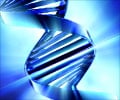
Bert Vogelstein, M.D. said that all cancers were caused by a combination of bad luck, the environment and heredity, and they had created a model that might help quantify how much of those 3 factors contributed to its development.
He added that cancer-free longevity in people exposed to cancer-causing agents, such as tobacco, was often attributed to their 'good genes,' but the truth was that most of them simply had good luck.
In a report on the statistical findings, the scientists said that they came to their conclusions by searching the scientific literature for information on the cumulative total number of divisions of stem cells among 31 tissue types during an average individual's lifetime. Stem cells "self-renew," thus repopulating cells that die off in a specific organ.
It was well-known that cancer arises when tissue-specific stem cells make random mistakes, or mutations, when one chemical letter in DNA is incorrectly swapped for another during the replication process in cell division. The more these mutations accumulate, the higher the risk that cells will grow unchecked, a hallmark of cancer. The actual contribution of these random mistakes to cancer incidence, in comparison to the contribution of hereditary or environmental factors, was not previously known, says Vogelstein.
To sort out the role of such random mutations in cancer risk, the Johns Hopkins scientists charted the number of stem cell divisions in 31 tissues and compared these rates with the lifetime risks of cancer in the same tissues among Americans. From this so-called data scatterplot, Cristian Tomasetti, Ph.D. and Vogelstein determined the correlation between the total number of stem cell divisions and cancer risk to be 0.804. Mathematically, the closer this value is to one, the more stem cell divisions and cancer risk are correlated.
Advertisement
Tomasetti, an assistant professor of oncology, said, "You could argue that the colon is exposed to more environmental factors than the small intestine, which increases the potential rate of acquired mutations."
Advertisement
"We found that the types of cancer that had higher risk than predicted by the number of stem cell divisions were precisely the ones you'd expect, including lung cancer, which is linked to smoking; skin cancer, linked to sun exposure; and forms of cancers associated with hereditary syndromes," says Vogelstein.
"This study shows that you can add to your risk of getting cancers by smoking or other poor lifestyle factors. However, many forms of cancer are due largely to the bad luck of acquiring a mutation in a cancer driver gene regardless of lifestyle and heredity factors. The best way to eradicate these cancers will be through early detection, when they are still curable by surgery," adds Vogelstein.
The scientists note that some cancers, such as breast and prostate cancer, were not included in the report because of their inability to find reliable stem cell division rates in the scientific literature. They hope that other scientists will help refine their statistical model by finding more precise stem cell division rates.
The study is published in the journal Science.
Source-ANI















